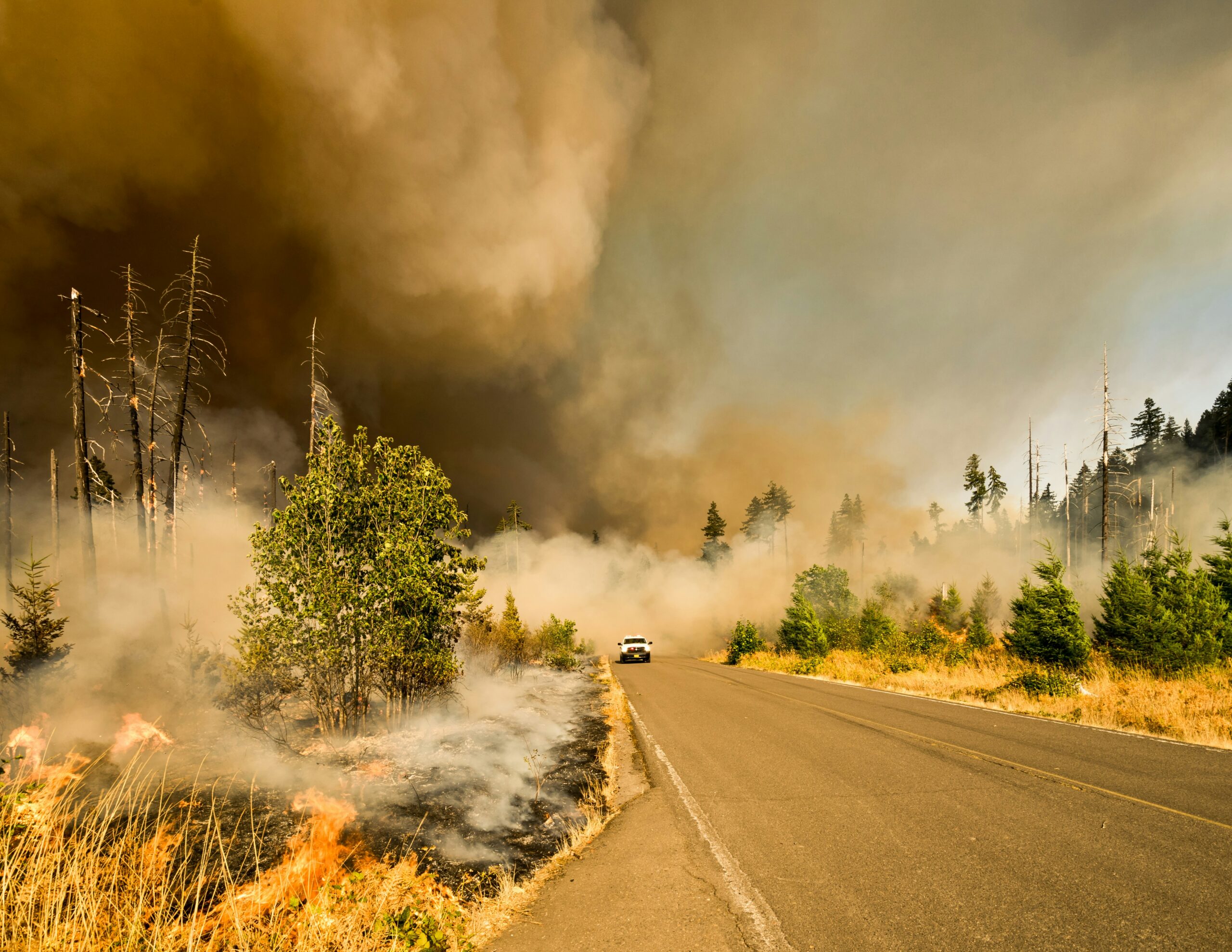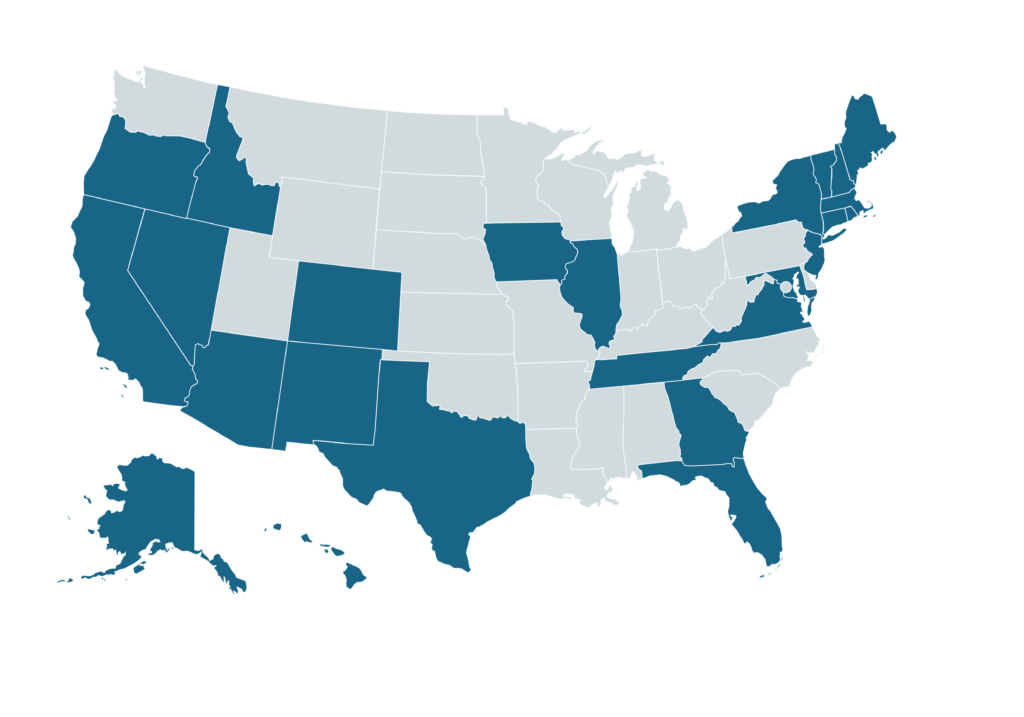
Policy Update
Building Climate Resilience in 2025: States Address Wildfires, Heat, and Flooding
April 14, 2025
Overview
As climate-driven wildfires, floods, and heat waves become more frequent and severe, states are ramping up efforts to adapt and build resilient communities. At least 25 states have introduced legislation in 2025 to improve their climate adaptation efforts.
Why It Matters: Climate Change and Adaptation Efforts
Climate change is increasing the frequency and severity of extreme weather events, including record droughts, wildfires, hurricanes, unpredictable snowpacks, heat waves, and flooding. One in three U.S. adults has been personally affected by extreme weather in the area where they live within the past two years. Climate adaptation and resiliency measures are integral in ensuring communities can adjust to the current and projected impacts of climate change.
The State of Play: How Are States Approaching Climate Adaptation in 2025?
Climate impacts and extreme weather vary regionally, and states are responding with tailored policies to address the specific needs of their communities. Most of the climate adaptation bills introduced across 25 states in 2025 focus on either: (1) wildfire resiliency, (2) extreme heat occupational standards, or (3) flood preparedness.

Wildfire Resiliency
Since January 1, 11,912 wildfires have burned 396,631 acres across the entire United States, an area roughly half the size of Rhode Island. While the West has typically been known for wildfires due to the drier environment, states across the South are experiencing worsening fire conditions caused by wind, low humidity, and downed timber left in the wake of other natural disasters.
To increase wildfire resiliency, states are focusing on providing communities with funding to strengthen wildfire protections, improving fire prevention strategies, and enhancing response capabilities.
- Grant Programs: Oregon (S.B. 83) and New Mexico (S.B. 33, sent to Governor) are seeking to establish grant programs that will provide funding for wildfire resiliency measures.
- Prevention and Response: Oregon (S.B. 85), California (S.B. 616), and Hawaii (H.B. 1064) also introduced legislation to update building codes, create wildfire mitigation standards, and implement a statewide wildfire hazard mapping and mitigation program.
Extreme Heat Occupational Standards
Climate change is leading to more intense and frequent heat waves, which are the deadliest form of extreme weather in the United States. As our climate warms, deaths from heat hazards are expected to increase. For workers, extreme heat poses a range of potentially debilitating or deadly threats.
While the Occupational Safety and Health Act of 1970 (OSH Act) made strides in protecting workers from heat-related hazards, states can take action above and beyond the federal level as heat conditions become more dire. States have an opportunity to fill crucial gaps left by federal policy.
This session, 13 states have introduced legislation to build on the work of OSHA and establish safety standards for heat-related illness in workplaces.
- Outdoor and Indoor Workers: Some states like Illinois (H.B. 3762), Connecticut (S.B. 830), Texas (H.B. 446), Vermont (H.B. 348), Massachusetts (S.B. 1355), New York (A.B 3527/S.B 3412), New Jersey (A.B. 3521/SB. 2422), Colorado (H.B. 1286), and Arizona (H.B. 2790 & S.B. 1330) are focusing on establishing protections for both outdoor and indoor workers.
- Outdoor Workers: Other states like Iowa (H.F. 742), Massachusetts (S.B. 1367), Florida (S.B. 510), Rhode Island (H.B. 5305), and Georgia (H.R. 209) are looking at establishing protections for outdoor workers, or have not specified whether the standards apply to outdoor and indoor workers.
Keep up to date with which states are introducing occupational heat safety standards here.
Flooding Preparedness & Resiliency
Floods are already the most common and among the most deadly disasters in the United States, causing damage to infrastructure essential to everyday life, such as homes or roads. In the next century, flood-prone areas around the country are expected to grow by nearly half. States are introducing a variety of legislation to prepare for the increase in floods.
- Flood Funds: This session, Virginia (SB 1335, sent to Governor) and New Hampshire (H.B. 595) introduced legislation to create funds for flooding preparedness and resiliency.
- Flood Risk Disclosures: Multiple states, including Rhode Island (H.B. 5827), Georgia (H.B. 618), and Texas (H.B. 4917), are seeking to require flood risk disclosures of properties in order to inform buyers of known flood risks. Some states, like Florida (S.B. 948) and Connecticut (S.B. 9), included both buyers and renters within flood risk disclosure mandates.
See a report card of different states’ flood risk disclosures here.
Looking Ahead: Adapting to Climate Change
As climate impacts intensify, states are taking proactive steps to enhance adaptation and resilience. Staying informed on evolving state policies will be key to ensuring effective and equitable climate adaptation efforts. For other resources on climate adaptation, see NCEL’s Climate Adaptation Policy Options and Climate Adaptation: Wildfires Fact Sheet.
Stay Informed on State Policy With NCEL
Stay up to date on trends in climate and energy policy across the country this year with NCEL’s Bill Tracking Map.